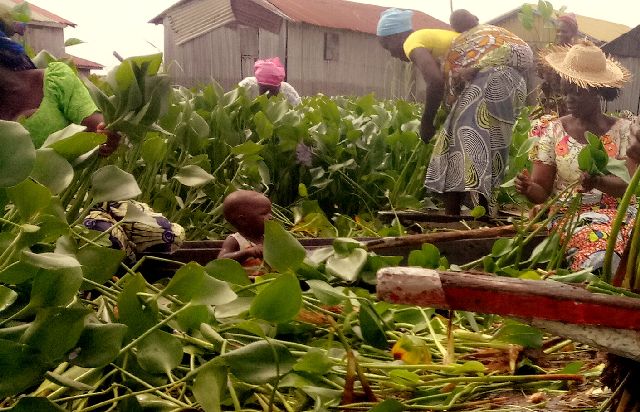The local water committees have adopted a three-year action plan focused on the enhancement of endogenous knowledge in the management of lake resources and the reduction of the effects of anthropogenic actions on these resources.
Despite the will and determination of these committees, they remain limited in the mechanical fight against proliferating aquatic plants, particularly water hyacinth, an aquatic plant with high invasion potential. Its proliferation is a source of environmental, economic and social pollution in Benin's aquatic environments. It depletes water in phytoplankton, thus reducing water productivity. In addition, when it dies, it releases all the pollutants it has had to trap into the environment. It is now covering more than a quarter of the surface area of these two lakes during flood periods. The members of the LWC have organized themselves to make a mechanical collection of this plant every Wednesday. The collected products are thrown away without any valorization, while in the commune of Sô Ava a local company is valorizing the water hyacinth by making bags, wicks, etc. This company is managed by a cooperative called "Togblé-Tognon".
CWP Benin is supporting the initiative through the development of a partnership between the LWCs and the "Togblé-Tognon" association for the enhancement of proliferating aquatic plants.
The members of the LWCs, led by two Technical Assistants of CWP-Benin, visited the lake village of Sô Ava, in southern Benin. The discussions focused on the different artisanal processing techniques of water hyacinth.
The LWC member participants who took part were satisfied with the exchanges they had with the women members of the association.

